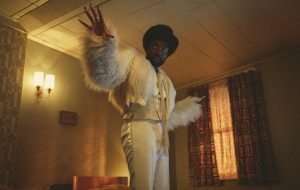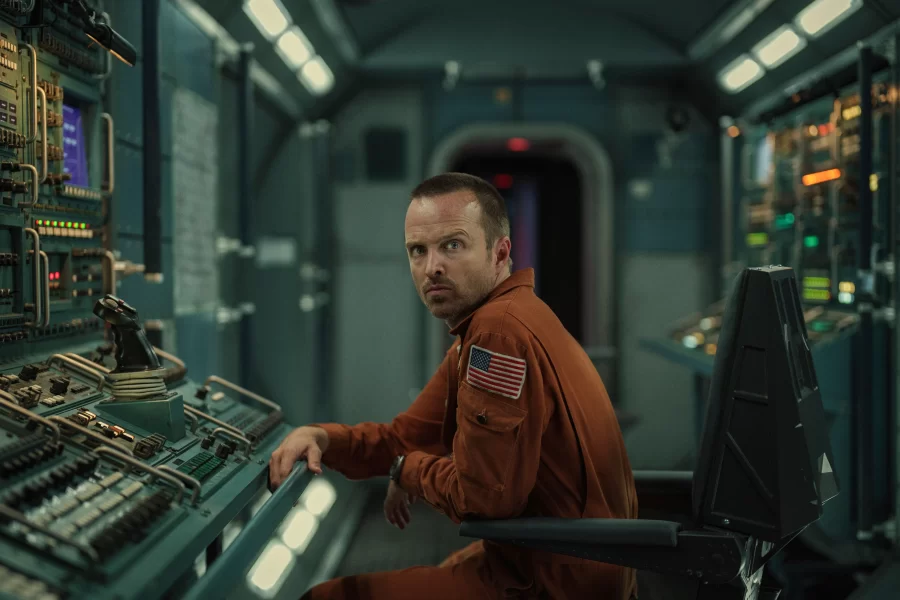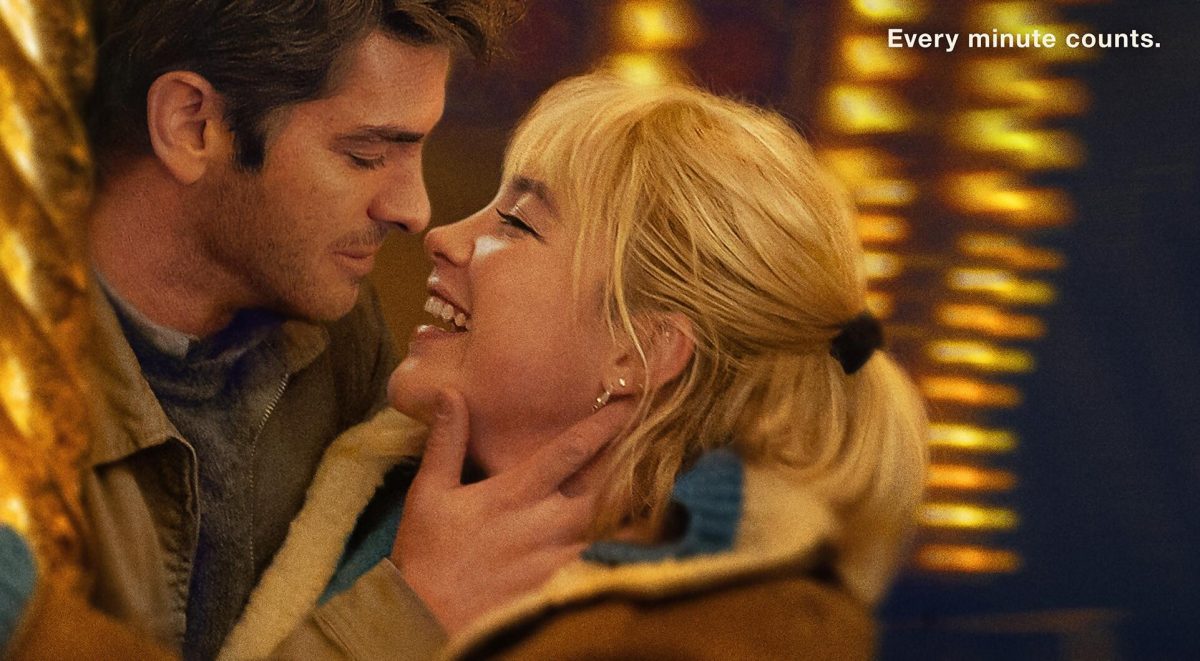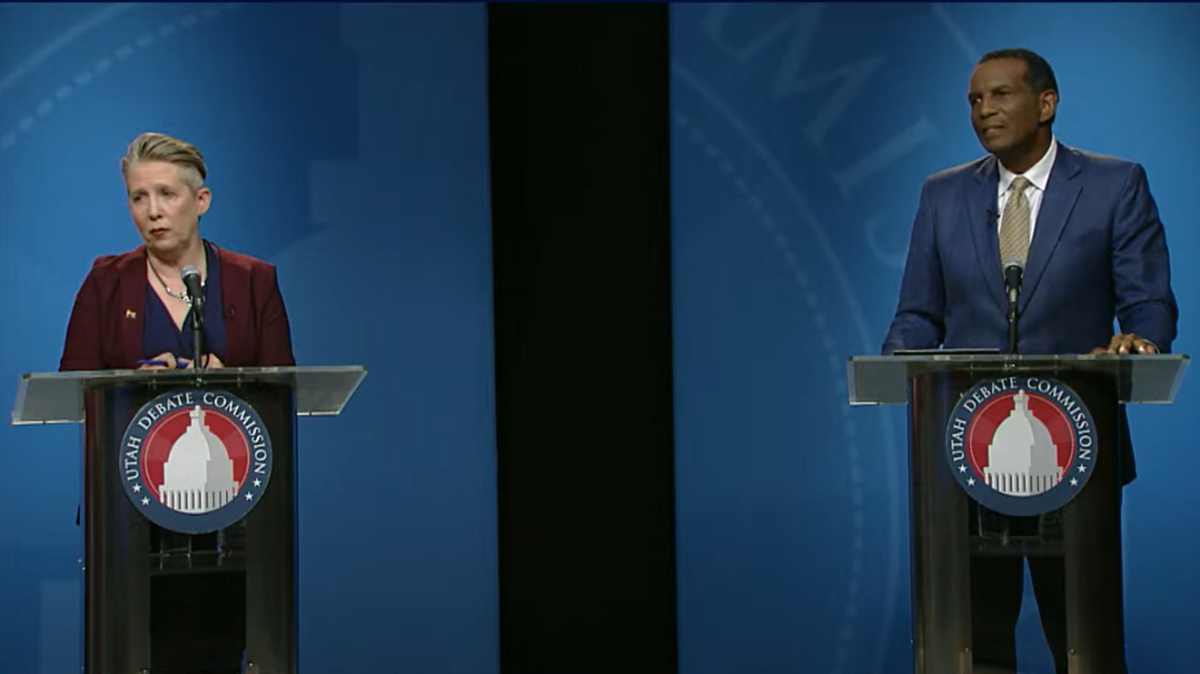Robot Clones and Demons: ‘Black Mirror’ Season Six Has It All
June 29, 2023
The science fiction anthology series “Black Mirror” has returned to Netflix with its sixth season, the last batch of new episodes coming out over four years ago. “Black Mirror” initially began as a British network show featuring stories about the dangers of technology and the human race’s relationship to it. Since then, the series has moved completely to the streaming service Netflix and with this newest season, the show has slowly moved away from its initial pitch becoming more of a modern-day “Twilight Zone.” While technology is still a theme in the series, many of season six’s episodes use it as a set or prop to tell a far more straightforward horror narrative. To explain what I mean by this let’s dive deeper into each of the five episodes.
Joan is Awful
Episode one feels the most reminiscent of the classic “Black Mirror”— following a woman who discovers a streaming service named “Streamberry” adapted her life into a show starring Salma Hayek. What I enjoyed the most about “Joan is Awful” was its wide span of commentary on topics from A.I., sneaky terms of service documents, constantly wired phones and the multiverse. Everything felt uncannily topical and meta in a thoughtful way. While I was consistently amused throughout the runtime, I did find myself feeling more and more disconnected as the humor became overdramatic. I also found the arc they gave to the protagonist felt somewhat rushed and unsatisfying, trying to make the audience root for someone who is frankly just an asshole. While a fun opener to the season, some elements could have been handled with more care.
Loch Henry
Episode two was laughably predictable but my favorite of the season. Film students and couple Davis and Pia begin to create a documentary on a dark case from the past of Davis’s countryside hometown when they discover it may not be as closed of a case as they thought. “Loch Henry” is mysterious, depressing and unapologetically disturbing in the best ways possible. While anyone will be able to catch on to the major twists of the story quickly, the main cast of characters and sinister sense of foreboding captured me and kept me interested in seeing how the twists would be revealed. The beautiful yet eerie imagery of the Scotland countryside set it apart from the rest of the season and had me trapped

within the nightmarish tale. The episode manages to hit its peak in the final moments with an absolute gut punch of an ending that will leave even the strongest of audiences sick.
Beyond the Sea
Episode three is the longest episode of the season but unfortunately the blandest. In the 1960s, two astronauts in space link to realistic robot clones of themselves on Earth so they can spend time with their families. When tragedy occurs, the two astronauts begin to share the same link leading to domestic chaos. “Beyond the Sea” is far from being bad but runs too thin to account for its hour and 20-minute runtime. The 60s setting makes the story more entertaining to watch but is unnecessary in the large scope of the plot. The cast is easily the standout element as lead Aaron Paul, Josh Harnett and Kate Mara. They all subtly play characters who are hiding their real feelings about the situation they have been put in. It’s probably the best acting of the season. The soap opera-like drama of the episode is amusing but cliche. Watching it, I often felt I was just waiting for the big moments to happen between large sections of seductive looks and coy dialogue. While the final scene was effectively shocking, I did feel it was a bit abrupt for the way the story had played out.
Mazey Day
Episode four follows paparazzi photographer Bo as she follows the trail of a famous actress who has suddenly disappeared. While one of the shorter episodes, “Mazey Day” was difficult to get through due to its lousy storytelling. The first half of the episode cuts between scenes of Bo and the actress, Mazey Day, without any connection, making it difficult to become engaged in the stories of either character. There’s no real narrative drive until the last third of the episode which then drops a twist that is given zero setup in the first 30 minutes. The cast all plays stereotypes rather than real characters and the plot’s commentary on paparazzi culture feels flimsy, unable to say anything all that deep. The episode opts for a dull “creature-feature” finale rather than the intelligent horror “Black Mirror” is known for.

Demon 79
The final episode feels out of place in the “Black Mirror” lineup but is delightfully campy. Nida is a shoe sales assistant in 1979 England who comes face to face with her darkest desires. A demon tells her she must sacrifice three human souls or else the world will end. “Demon 79” lacks any reference to the dangers of technology and plays like a filmmaker’s homage to the goofy, low-budget horror flicks of the 70s. Although it seems strange as the finale of the season, I was pleasantly surprised by the episode’s unique personality. This specific story has been told a thousand times in other films and TV shows, but the late 70s setting gives it a quirky freshness. The protagonists’ bubbling rage is relatable and watching a demon dressed as a singer from the musical group “Boney M.” push her to murder is equal parts hilarious and twisted. Despite its strange position in “Black Mirror”, “Demon 79” was a solid finale to season six.
The latest season of “Black Mirror” never hits the highs of its previous installments and lacks the strong science-fiction theme it became famous for but offers enough diverse and entertaining stories to fill an afternoon of Netflix binging.








